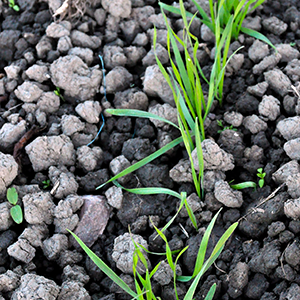Contact
Katharina Meurer, Researcher
Department of Soil and Environment
katharina.meurer@slu.se, 018-672476

Soil degradation, i.e. the decline in soil quality caused through its misuse by humans is a serious threat and worldwide 12 million hectares of land are lost because of soil degradation every year.
Soil quality is, among others, determined by the soils structure, i.e., the spatial arrangement of solids and pore space, which controls key soil processes, e.g. air and water movement, microbial activity, carbon and nitrogen cycling and root growth.
On the other hand, the formation and degradation of soil structure is driven by different physical and biological processes in the soil. Those interactions are very complex and models are powerful tools to understand the different processes and be able to make predictions.
For example, there is a two-way interaction between soil organic matter (SOM) and soil structure and while soil structure can “protect” organic matter from decomposition, the content of organic matter affects bulk density and pore size distribution.
However, this two-way interaction has so far not been considered in soil models. Here, we propose a simple model approach that relates SOM dynamics to soil structure.
The model was tested against data on temporal changes on soil organic carbon (SOC) and bulk density, as well as limited data on microporosity under two contrasting C inputs (bare fallow and animal manure) collected at the 61-year old Ultuna frame trial.
After the calibration, the model was able to reproduce SOC dynamics and the trend in bulk density changes. The model was then tested against data from another C input treatment (green manure) and described the data reasonably well after re-calibration of the C retention coefficient ε. After this first application, the model will be further developed and extended with coupling to modules for soil hydrology and plant growth.
Katharina Meurer, Researcher
Department of Soil and Environment
katharina.meurer@slu.se, 018-672476